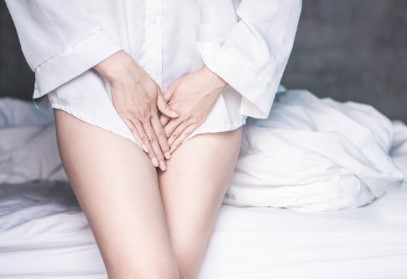A lump in the groin area of women can have various causes, and it’s important to consult a healthcare professional for a proper evaluation and diagnosis. Some potential causes of a lump in the groin area include.
Hernia
A hernia occurs when an organ or fatty tissue pushes through a weak spot in the surrounding muscle or connective tissue. In the groin area, inguinal hernias are common and can cause a noticeable lump.
Lymphadenopathy
Enlarged lymph nodes in the groin can be a result of an infection or inflammation in the lower extremities or genital area. Lymph nodes play a role in filtering and fighting infections, so their enlargement can be a sign of an underlying issue.
Lipoma
A lipoma is a non-cancerous fatty lump that can develop under the skin. It usually feels soft and moves easily when touched.
Cyst
Cysts are sac-like structures that can develop in different parts of the body. In the groin area, sebaceous cysts or Bartholin’s cysts (cysts that form near the vaginal opening) can occur and create a lump.
Abscess
An abscess is a localized collection of pus caused by an infection. If an infection occurs in the groin area, it can lead to the development of a painful lump.
Lymphoma or Cancer
In rare cases, a lump in the groin area could be a sign of lymphoma or cancer. However, it’s important to note that these conditions are less common causes of groin lumps.
Remember, this information is not meant to diagnose your specific situation. It’s crucial to consult with a healthcare professional who can perform a physical examination, ask about your medical history, and order any necessary tests to determine the cause of the lump and recommend appropriate treatment.
Example of Medicine for Lump in Groin in Women
It’s important to consult a healthcare professional for a proper diagnosis and appropriate treatment. The specific medication prescribed will depend on the underlying cause of the lump. Here are a few examples:
Antibiotics
If the lump is caused by an infection, such as an abscess or lymphadenopathy, antibiotics may be prescribed to help clear the infection.
Pain relievers
Over-the-counter pain relievers like acetaminophen or nonsteroidal anti-inflammatory drugs (NSAIDs) may be recommended to alleviate any pain or discomfort associated with the lump.
Hormonal therapy
In the case of a Bartholin’s cyst, which is a fluid-filled cyst near the vaginal opening, hormonal therapy or warm compresses may be recommended initially. In some cases, if the cyst becomes recurrent or problematic, surgical intervention may be necessary.
Topical creams or ointments
Depending on the cause of the lump, a healthcare professional may prescribe topical treatments to alleviate symptoms or promote healing.
Hernia support garments
If a hernia is the cause of the lump, a healthcare professional may recommend wearing supportive undergarments, such as a hernia belt or truss, to help reduce discomfort and prevent the hernia from enlarging.
It’s important to remember that the above examples are just general possibilities, and the appropriate treatment will depend on the specific diagnosis made by a healthcare professional. Always consult with a doctor for an accurate diagnosis and proper medical advice.
Symptoms of Lump in Groin of Women
The symptoms of a lump in the groin area of women can vary depending on the underlying cause. Here are some common symptoms associated with a groin lump:
Noticeable lump – The most obvious symptom is the presence of a lump in the groin area. The lump may vary in size, shape, and consistency (soft, firm, movable, or fixed).
Pain or discomfort – The lump may be accompanied by pain or discomfort, which can range from mild to severe. The pain may worsen with movement or pressure on the area.
Redness or inflammation – In some cases, the skin over the lump may appear red or inflamed. This can be a sign of an infection or inflammation in the area.
Swelling – The presence of a lump in the groin area may cause swelling in the surrounding tissues. The swelling can be localized or extend to a larger area.
Difficulty or pain with movement – Depending on the size and location of the lump, it may cause difficulty or pain when moving the leg or hip.
Other associated symptoms – Depending on the underlying cause, additional symptoms may be present. For example, if the lump is caused by an infection, you may experience fever, chills, or a general feeling of illness.
It’s important to remember that these symptoms are general and can be caused by various conditions. It’s always best to consult with a healthcare professional who can evaluate your specific situation, perform a physical examination, and order any necessary tests to determine the cause of the groin lump and recommend appropriate treatment.




